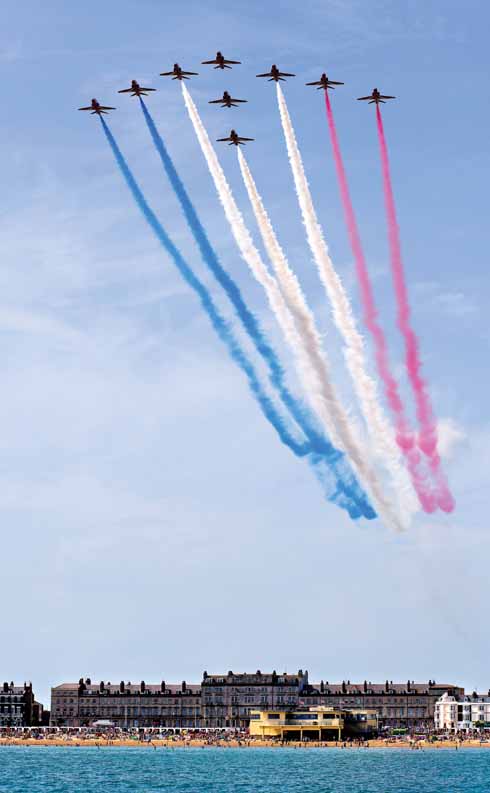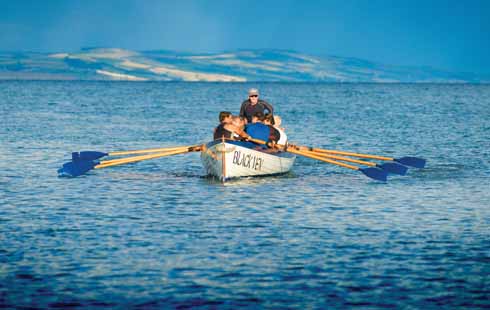Dorset from the sea
Steve Belasco has charted the Jurassic coast from Studland to Lyme Regis
Published in July ’15

This early autumn shot at Old Harry Rocks in early morning sunshine looks towards Handfast Point and the Pinnacles

A pod of Bottlenose dolphins off Weymouth Bay. This shot really was the starting point for the whole Jurassic Photographic library/book.
When Steve Belasco’s wife Josie suggested he combine his professional photographic skills with the fact he’d been sailing up and down the Dorset coast for 20 years, the idea which would eventually give birth to the book Dorset from the Sea was born; four years after that, the 108 pictures looking at Dorset’s Jurassic Coast from Old Harry to Lyme Regis are available in coffee-table hardback or souvenir editions.

The colours of the sands at Worbarrow Bay, both the unadulterated colours and those affected by brine and floral colonisation
In fact in the first instance, Steve simply wanted to document Dorset’s Jurassic Coast from the sea in the form of a picture library (www.jurassicphotographic.com), just so that people could see what it looked like. It was from the website that the idea for the book came.

You can really see the effects of time on these cliffs to the east of White Nothe, where not only have there been recent landslips, but there are clearly areas where there have been cliff falls long ago and the surface has been re-covered by grass. The beacon was a sighting mark for gunnery testing.

Bat’s Head shot from around 100 yards off shore, to the west is White Nothe, to the east Durdle Door
Steve, who lives in Portesham, has a small motorboat moored at Portland and has been pottering up and down the coast for decades, but has also been shooting images for a local newspaper of sailing in Weymouth Bay for a quarter of a century, whence the book’s foreword from Dame Ellen MacArthur. Steve introduced her to Dorset when he went to photograph her and she was stranded in the county by awful Channel weather when circumnavigating the country as a teenager. ◗

The 44,000 tonne cruise ship Artania leaving Portland Harbour for Weymouth Bay; Portland is becoming an increasingly popular destination for cruise ships

Looking back towards the shore, as with this shot of Durlston Bay near Swanage, reveals the fascinating geological details of which one is completely unaware when walking on the clifftops above
❱ Dorset from the Sea is published by Veloce Publishing (01305 260068), www.veloce.co.uk. It is available in a hardback coffee table version (ISBN 978-1-845847-62-3) at £25, or a pocket souvenir version (ISBN 978-1-845847-64-7) at £9.99.

Fort Head (Chequer Fort), Portland Harbour is one of the few remaining iron-clad forts built to protect against the French threat of invasion. It’s also one of Steve’s favourite subjects and in this shot you can see the massive cast iron cannon breeches that were dumped in the water when the fort was decommissioned.

Chapman’s Pool is a popular spot for small boats to lay up overnight. This picture, despite the seemingly tropical sky, was taken in January.



